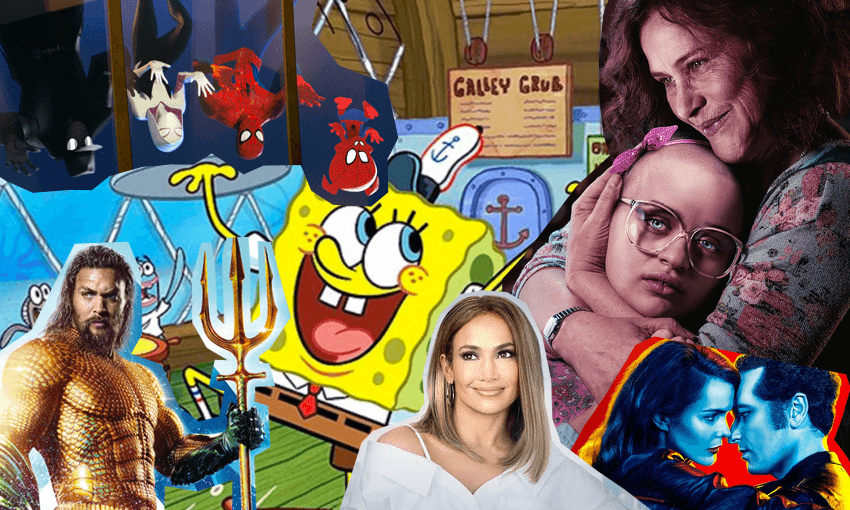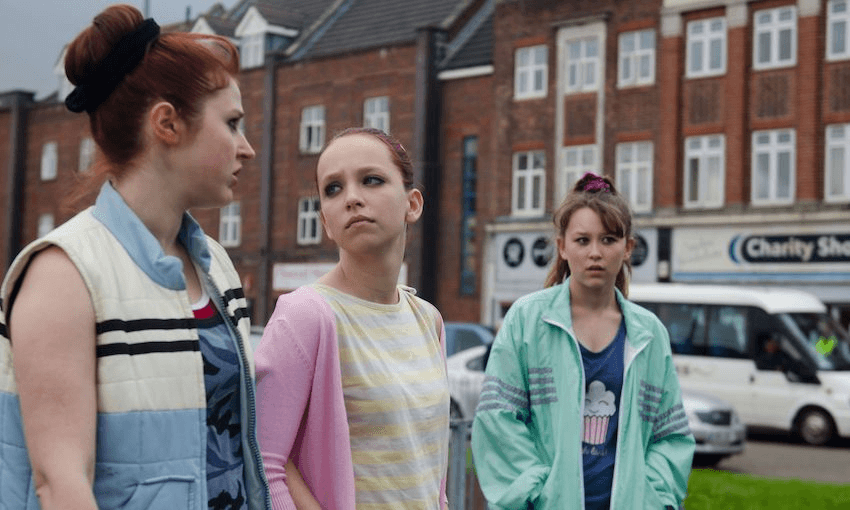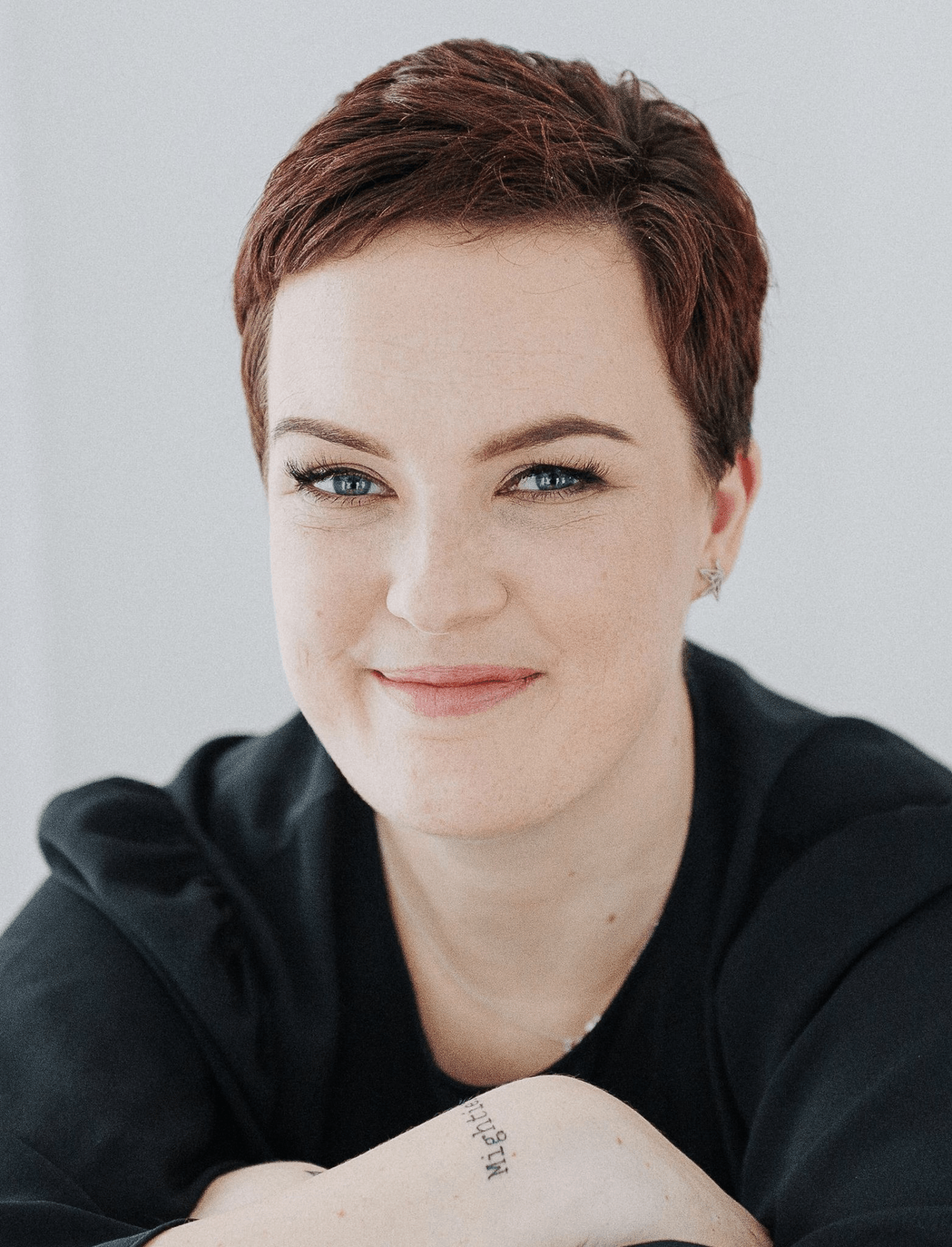All the superheroes are coming to Lightbox this month – Spider-Man, Aquaman, Jennifer Lopez, Spongebob Squarepants – but there’s a few villains in the bunch too. It’s your round-up of what is coming to Lightbox in April.
The Act (Four episodes dropping April 4, then weekly)
From Jean Sergent’s review of The Act, coming later this week: “As a connoisseur of true crime, there is no telly event I’ve been more excited for this year quite like The Act. Chronicling the horrific crimes of Dee Dee Blanchard and her daughter Gypsy Rose, this is a powerhouse drama that takes us through a story of lies, fraud, illness, and murder. I’m gleeful about it! There are so many moments in The Act that are designed to give viewers chills and elicit gasps. The story of Dee Dee Blanchard’s mistreatment of her daughter Gypsy Rose isn’t the banality of evil – it’s the garishness of greed.” / Jean Sergent
9-1-1 (Binge S1 from April 2)
It’s a show starring Connie Britton and Angela Bassett as a 911 operator and a police sergeant? Why are you still reading this? Go and watch it right now! Nothing I have to say is worth more than watching two women at the peak of their actressing power!
But, in all seriousness, 9-1-1 marks television auteur Ryan Murphy’s sashay into the police procedural, and it’s the best of both worlds: The reliable thrill of a show that delivers a contained, resolved myster in the space of forty-five minutes but also the firework nutbaggery that is a Ryan Murphy show. You have no idea what will happen or why, but you know that it will, and it will be wild. / Sam Brooks
Second Act (Film from April 3)
Don’t be fooled by the platinum-selling albums, the billion-viewed YouTube video or the rocks that she got, she’s still Jennifer Lopez, ridiculously charismatic and appealing actress.
Now, I am as much in the can for Jennifer Lopez as a human being can be. I think her performance in Out of Sight is one of the great unheralded performances of our time; she manages to be effortlessly natural onscreen and impossible to look away from. If she didn’t pivot to music and focussed on acting full-time, there’s no question in my mind that she would be considered one of our most significant movie stars, as opposed to quadruple pop cultural threat she is now.
Which brings me to Second Act, a beautiful froth of a workplace comedy that is quietly groundbreaking in so many ways. One, it’s a mainstream comedy led by a woman in her late forties (J Lo is 49 you guys), who’s also a woman of colour, and one where her love interest is noticeably younger than her but it never comes up. It’s the movie equivalent of frosé – refreshing, and gets you reliably buzzed. / SB
Good Girls Revolt (Binge from April 4)
https://www.youtube.com/watch?v=qAB_BuPH4EQ
You’ve heard about mad men, but have you heard about mad… women? Set in the swinging 60s, where the bouffants were as bafflingly large as the gender pay gap, a small group of women working at News of the Week magazine are realising just how badly treated they are. Forced to fetch coffees, publish under male bylines and put up with sexist comments all day, the women band together to due their employer for gender discrimination and general bad-times. If that’s not enough to get you into it, the character Nora is based on Nora Ephron. What an origin story! / Alex Casey
Spongebob Squarepants (Binge S10 from April 10)
Last year when I found out Stepen Hillenburg, creator of Spongebob Squarepants, had died, I feel like a part of me died too. I fondly remember racing home after school to hit record on the VCR at 4.30pm every afternoon, diligently pausing the tape when the ads were on so that I could relive the pure undersea nonsense interruption-free.
Call me a stoned Jack Black on the couch in the smash hit Colin Hanks vehicle Orange County, but I truly think Spongebob Squarepants is still just a damn funny show. Think about all the memes. Think about the Krusty Krab Pizza song. When I tell you to get into the sea for this one, I bloody well mean it. / AC
Woodshock (Film from April 10)
Who would have ever foreseen Torrance Shipman becoming a true and pure indie film darling? She’s sexy, she’s cute, she’s taken too many psychedelic drugs and has wandered into the forest to process her grief. Classic. Yarn. In Woodshock, Kirsten Dunst plays a woman who loses herself in the woods (metaphorically and literally) after the death of her mother.
The directorial debut of sisters Kate and Laura Mulleavy, it looks to be a haunting as hell examination of loss and isolation, with the added Tom Ford aesthetic of both directors being fashion designers. The New Yorker likened it to “Alice in Wonderland in reverse,” but my instinct is to double feature it with Melancholia and really have a good, trippy wallow. / AC
Aquaman (Film from April 17)
When I saw Aquaman, I left the cinema asking many questions. If Nicole Kidman wanted to hide from the people underneath the ocean, why did she live in a lighthouse right next to where she washed up? What accent is Temuera Morrison doing? How much of the filming did Amber Heard spend lightly damp? What is the actual economy of the crab civilization under the ocean? How does Jason Momoa’s spiky armour have spiky abs? When can I see it again, can I see it in Gold Class?
But, also? I had a whole lot of fun watching Aquaman. It’s fun in a way that none of the previous DC Universe films have been, so rather than it being like watching an embittered grown man bang action figures together, it’s like watching a twelve year old kid do the same, with that fantastical joy and imagination in his mind. It’s silly, it’s dumb, it’s fun, and it’s a really good time.
Plus, Dame Julie Andrews plays a massive snake monster, in what I’m sure is the role she’s been preparing for her whole life. / SB
Spiderman: Into the Spider-Verse (Film from April 17)
No qualification here: Into the Spider-Verse is not only the best Marvel movie to come out, it’s not only the best Spider-Man movie that exists, but it’s the most inventive and joyous comic book movie I’ve ever seen.
If I was a parent, or an eight year old child with unprecedented access to a cinema, this is the film I would use to introduce them to comic book movies. It is effortlessly diverse, beautifully funny, visually inventive and so full of creative verve and vim – basically it’s the purest and most honest adaptation of what comic books are, and can be. Other films try to turn comic books into film and get stuck in origin stories and endless fanservice, but Into the Spider-Verse captures the propulsive momentum of someone flipping through colourful pages frantically, wanting to get to the end of the story.
Absolutely necessary watching, no matter your demographic. / SB
The Americans (S6 from April 27)
It already looked like all the best hair on television was coming to Lightbox this April thanks to Connie Britton, but who has to come along and clinch the deal but Felicity herself Keri Russell? That’s right, it’s the sixth and final season of The Americans.
What I’ve already said about the show remains true: “The Americans has been hailed as one of the best, smartest and most taut shows on television. If you haven’t heard of it, I don’t know what Cold War rock you’ve been living under, but you need to get on the boat. While the premise might be simple (two Russian spies are in deep cover in America in the 80s), the emotions are anything but. Within all the spy drama, and wigs, there’s a beautiful and compelling story of a relationship constantly in flux as each party decides what they want, and what they actually need. Keri Russell and Matthew Rhys give performances worthy of the show – sometimes even exceeding it – while guest stars Margo Martindale, Alison Wright and Frank Langella do layered, sparky work from the sidelines.” / SB
This content was created in paid partnership with Lightbox. Learn more about our partnerships here.





